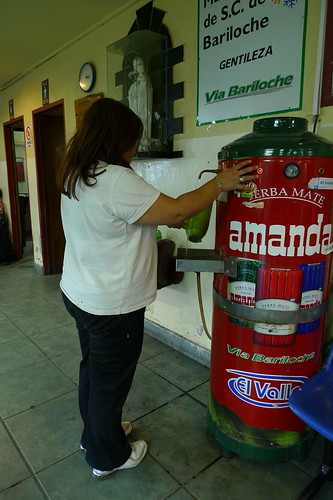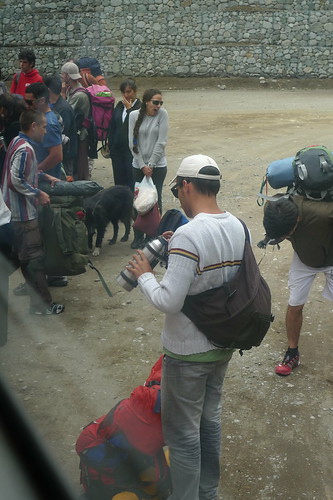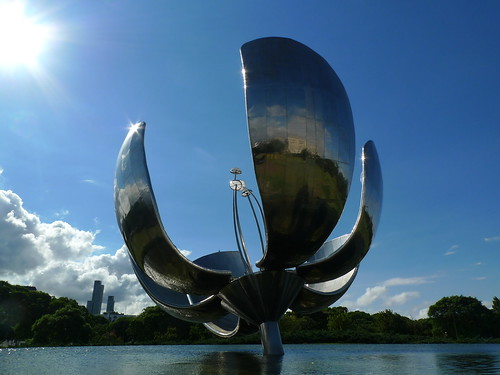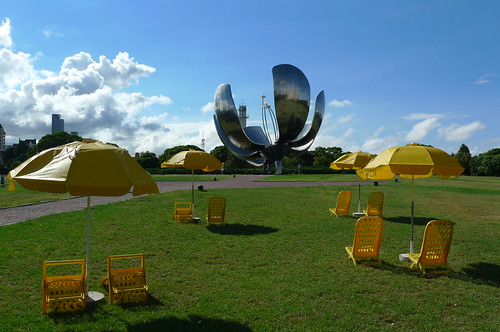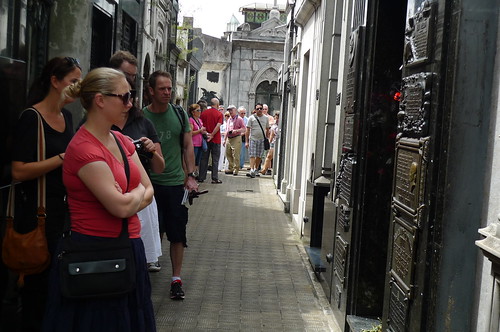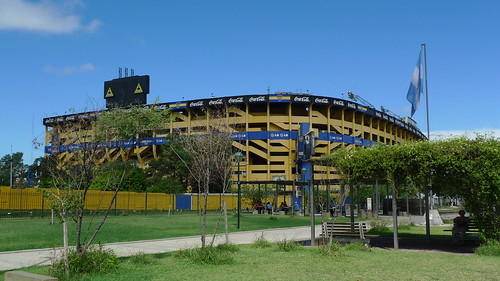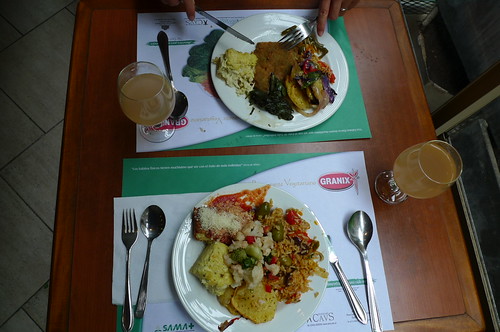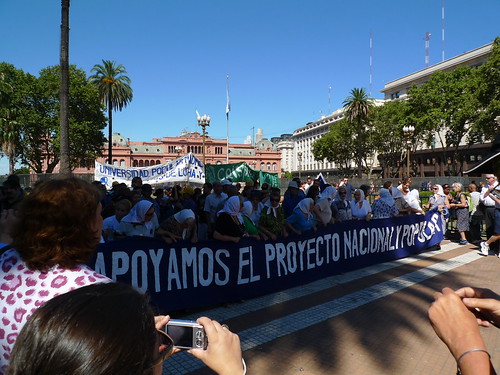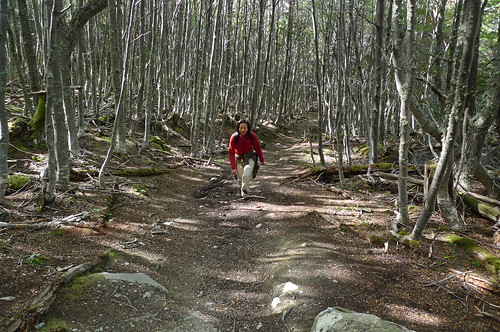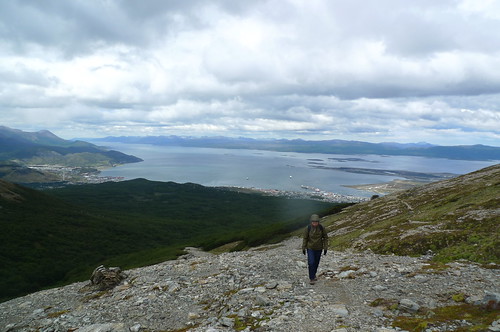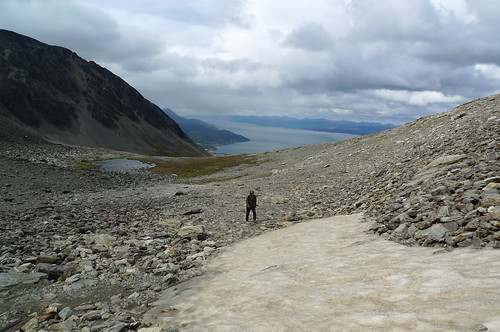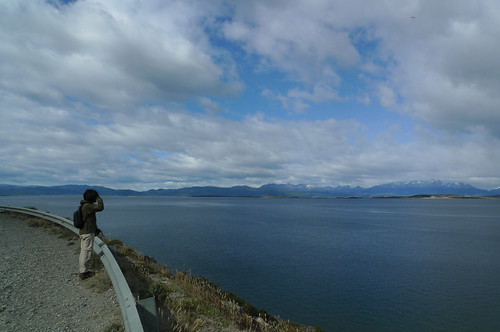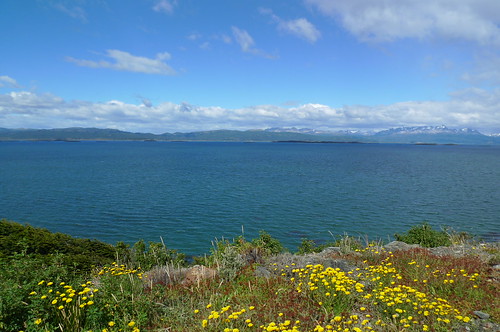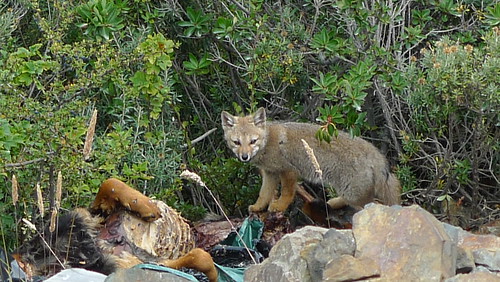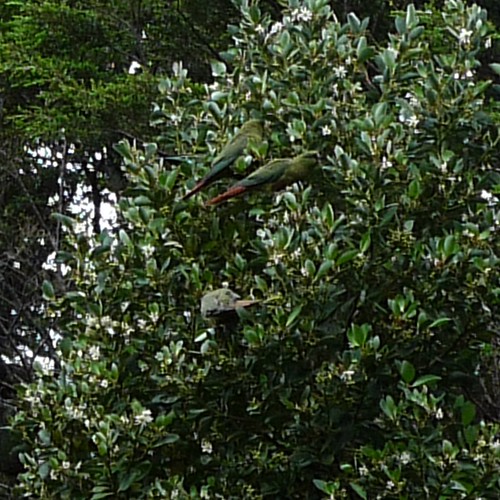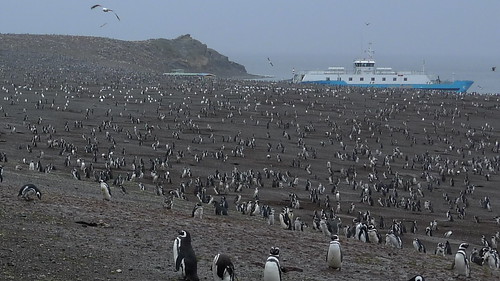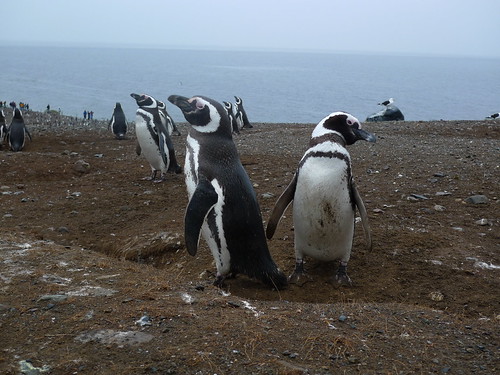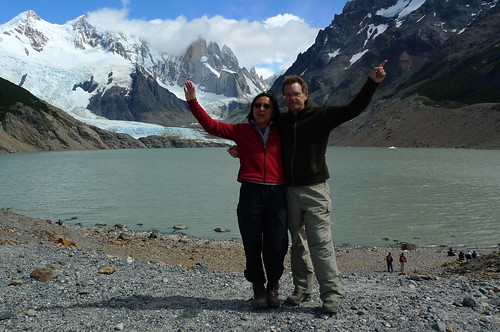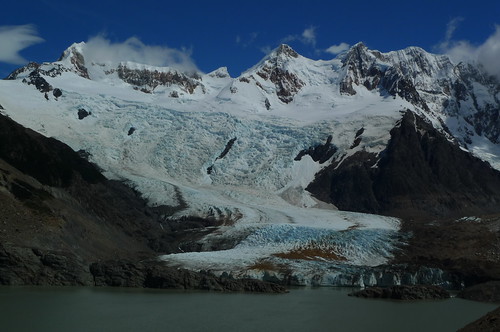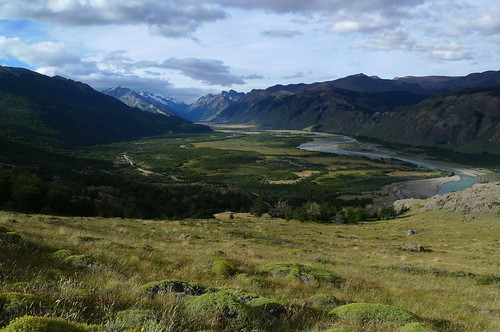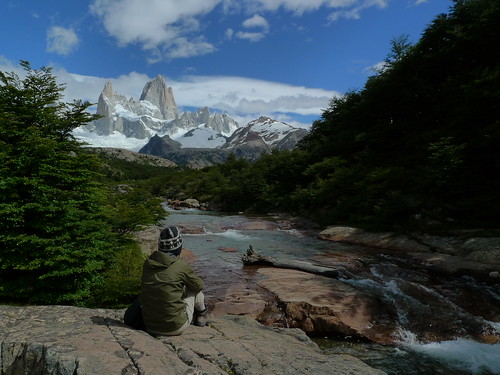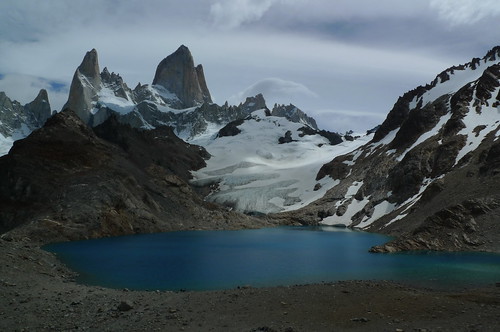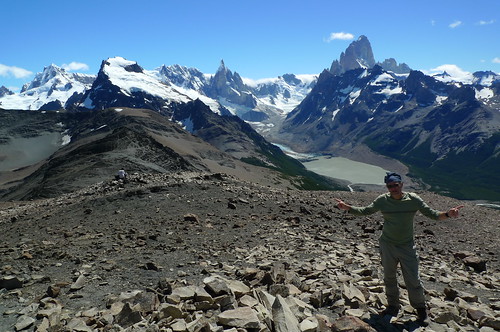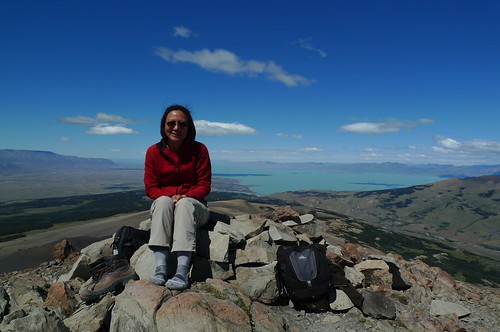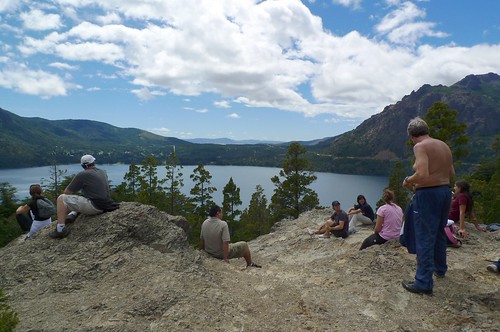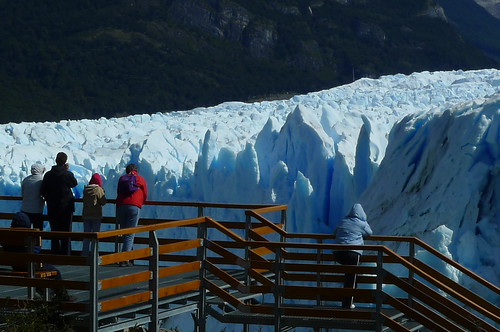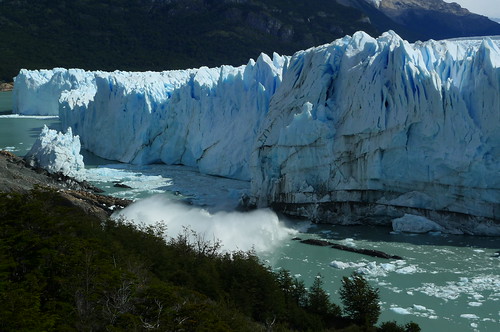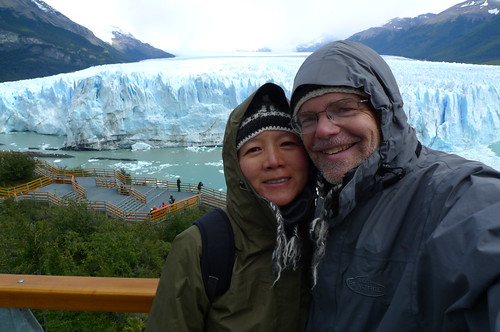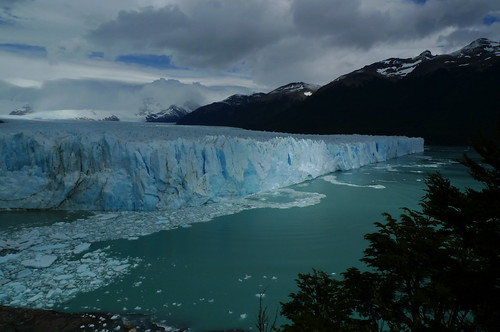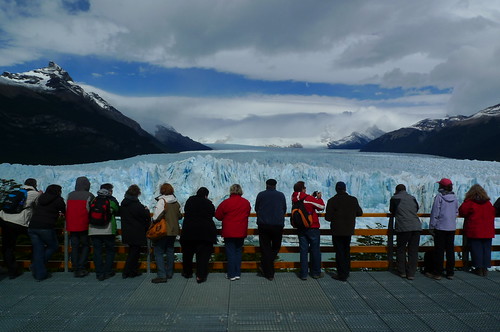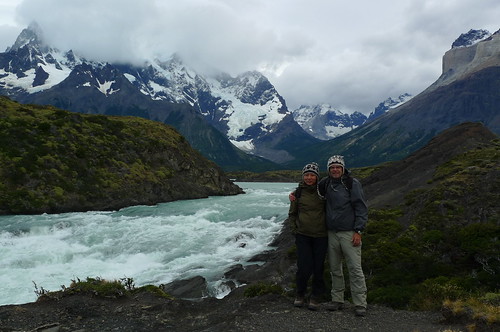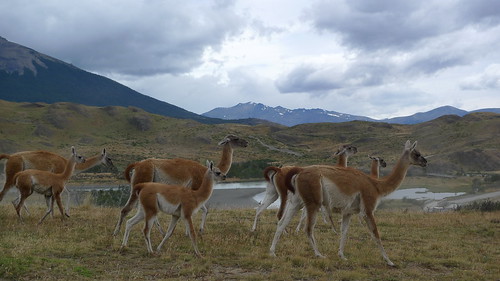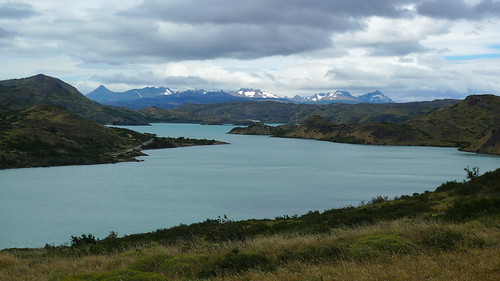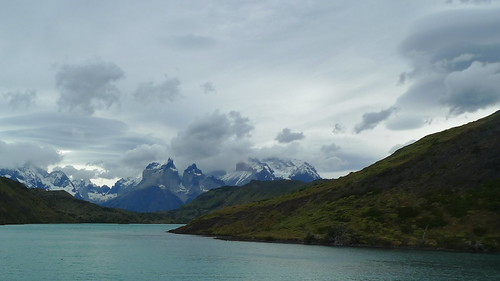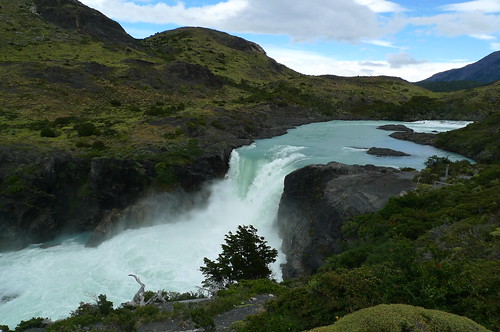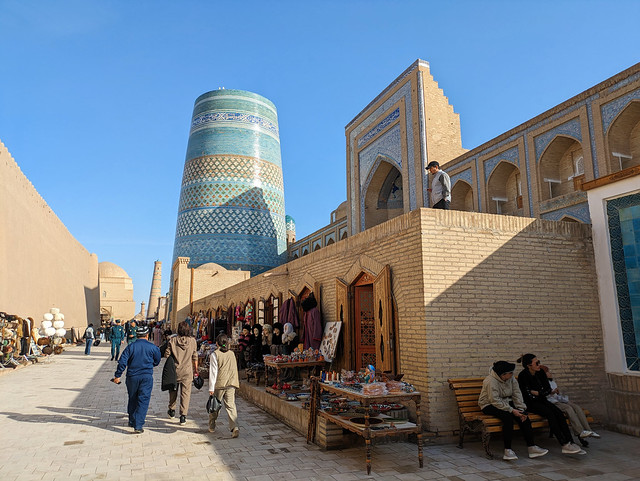We took the
Navimag ferry Evangelistas south 1000 kilometers from Puerto Montt to Puerto Natales. Since this is a working ferry instead of a cruise ship, I had no qualms about riding it. When we went to Norway we rode the coastal ferry
Hurtigruten to get around. For symmetry we had to give the Navimag a try. Besides John loves boat rides. I, on the other hand, had low expectations.
The first day weather was perfect; that is, sunny, though we did not leave port until 5pm. The second day it rained more or less the whole day. At night we sailed in the Pacific Ocean over 10 to 15 foot waves which was considered calm. If it were not for the Dramamine pill, sleep would have been hard to come by. The third day weather turned slightly better. Along the way there were snow-capped hills, the occasional dolphins, sea lions, a shipwreck, rainbows, and glaciers. The Pio XI Glacier was quite impressive as it's the largest glacier in South America.
In the middle of the third night around 3am, we were shaken awake by a couple of violent jolts. I drowsily assumed earthquake, proceeded to go back to sleep. John, being the usual alarmist, jumped out his bunk and ordered me to get up and get dressed. I figured that it cannot hurt and decided to humor him. Immediately after that the loudspeaker went off announcing "emergency" and we were order to put on our life jackets and gather at the Pub Deck (the top of the ship). There was hypothermia to consider, we needed to put on or bring all the warm clothes we had. We may never come back to the bunks, we needed to bring our passports, money belts, computer, etc. What if John and I get separated? Good thing I skipped "Titanic" on purpose, so I did not have to cram a playback in my head.
As we were a little slow going, a crew-member was sent to our corner of the ship to hurry us up. By the time we got to the Pub Deck, people were already being sent back to their cabins. The crew had checked out the boat; we were not taking on water and we can still sail. The official word was an investigation was still underway. Through the grapevine we learned that the ship had run into an island. We had to assume that someone fell asleep at the job since the boat is full of instruments: GPS, radar, etc. After some chatting with fellow passengers we went back to our bunks to catch some sleep. The ship now had a vibration it did not have before. It was a restless night.
The next morning we woke up to find dirt and branches in the bow and were informed that we were now sailing at around 8 kmph instead of 16 as only one of the "screws" is operating. In the afternoon a Chilean Navy boat showed up to inspect our boat, ordered a change of course, and escorted us the rest of the way. In the end we spent an additional day and night on the boat. We spent the day working on our will. Well, at least we thought about it. And yet another restless night rooting for our remaining engine to keep chugging. We were very glad to be safely off the boat on the morning of the fifth day.
A beautiful day in Patagonia to start the voyage on the Evangelistas.
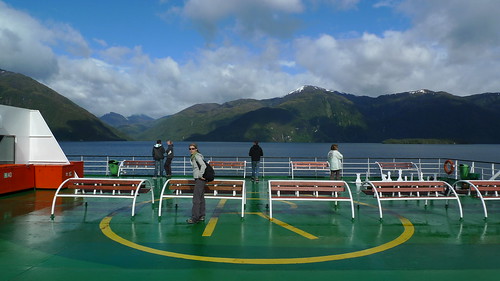 View off the stern.
View off the stern.
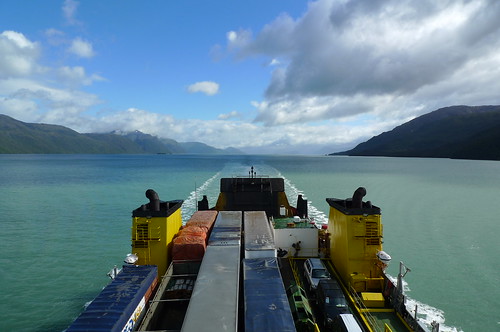 The Pio XI Glacier.
The Pio XI Glacier.
 Pio XI.
Pio XI.
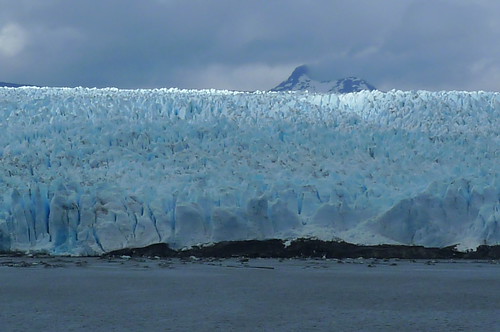
A rainbow off the stern.
 The Evangelistas at the dock at Puerto Natales.
The Evangelistas at the dock at Puerto Natales.
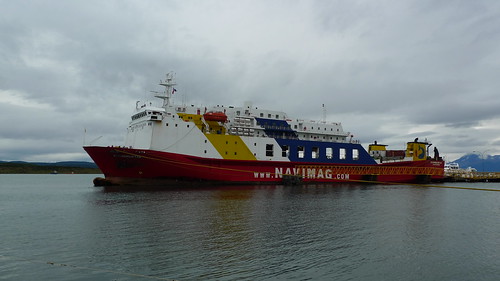 A crew inspects the damage to the ship's bow after its collision with the island.
A crew inspects the damage to the ship's bow after its collision with the island.


